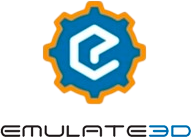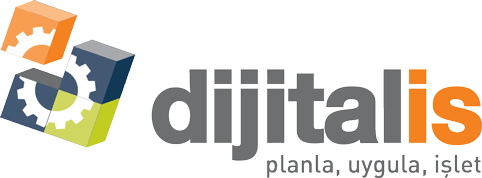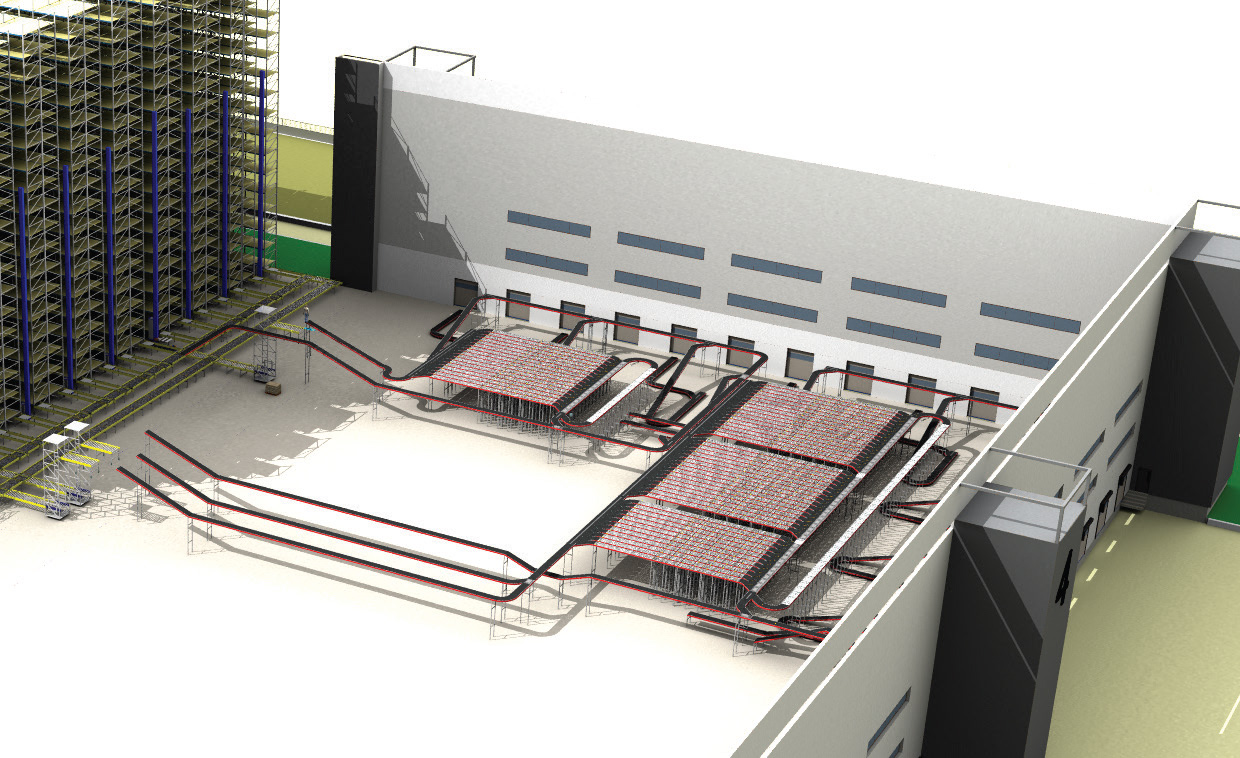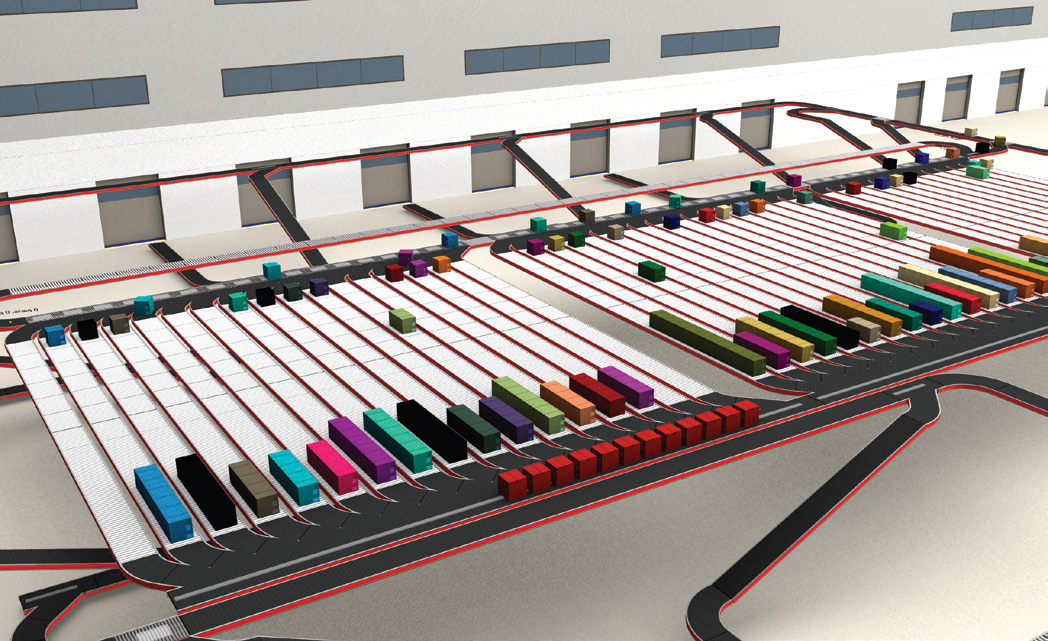Success Story in the Logistics Sector
Warehouse Design and Simulation
Ekol cuts the new warehouse design process in half.
Ekol, one of the leading logistics companies in Europe and Turkey, operates in 38 countries with over 750,000 square meters of storage space, a fleet of more than 5,500 vehicles, and 6,500 multinational employees. Today, Ekol designs and provides integrated logistics services and supply chain solutions to domestic and foreign clients in various sectors, leveraging its created know-how, qualified human resources, and advanced technology applications.
Why was the project needed?
Traditionally, in warehouse and automation investments, once a system is installed, changing the system is not possible. Design revisions that may be requested later will be almost as expensive as the installation itself.
In Ekol's warehouses, known for their emphasis on automation in the logistics sector, versatile structures such as conveyor systems, automatic shelving systems, shuttle, and robotic systems are used. However, automation investments were previously made without detailed feasibility and material flow analyses, decisions were made based on knowledge and experience gained from previous studies. Wanting to reinforce its technological superiority, Ekol believed in the benefit of foreseeing how it would work under different scenarios before physically setting up the warehouse.
It was impossible for existing tools and traditional methods to see the product flow on automation systems, identify where bottlenecks would occur in the system, and predict how warehouse operations would be affected under the dynamic conditions of real life. Therefore, Ekol decided to establish a decision support system with a physical engine that simulates the mechanical design of the system and real conditions, where they could test the product flow under different scenarios.
Through such a decision support system, Ekol will be able to see if its investment is optimally designed in terms of installation stages and capacity. Errors that could occur after installation and start of real operations will now be identified and rectified during the design phase.
"When presenting to our global clients and producing automation solutions for them in our facilities, we achieve effective results by showing simulation outputs. While previously experiencing limitations in two-dimensional visuals, when we present three-dimensional simulation videos, everything falls into place in our clients' minds, and our difference from our competitors is understood much better."
Ali Can Özcan
Business Development Specialist
What solution was provided?
Starting the search for a simulation-based decision support system, after meeting with many domestic and foreign companies, Ekol was satisfied with the results of the work done by Dijitalis. Thanks to the simulation model established by Dijitalis on the Emulate3D platform, Ekol experts could clearly convey the new systems they had in mind for warehouse design by comparing them with the results of the previous design. Impressed by both the ease of use and reliable results of the Emulate3D software, Ekol decided to use the software internally.
Having received license and training services from Dijitalis, the distributor of Emulate3D in Turkey, Ekol now benefits from simulation even in the smallest mechanical and flow design projects. Questions such as determining capacity and how conveyors within the building can be designed are answered by Emulate3D through simulation based on real values and conditions.
What was achieved at the end of the project?
Thanks to the successful results achieved, Emulate3D gained trust in Ekol management. The persuasion process was accelerated by presenting three-dimensional simulations to managers.
Simulation work is now carried out even in the smallest conveyor investments, and more effective results are obtained for Ekol by sharing the necessary values with suppliers to achieve the highest ROI.
While scenario planning used to be very time-consuming, with Emulate3D, trying out scenarios no longer takes time. Especially after the scenario is constructed, Ekol, which reaches 90% efficiency in testing scenarios, does not stop at this point and can find time to try new scenarios to bring the system to 100% efficiency.
All scenarios can be presented to top management in an easily understandable way. Thus, every question is answered clearly and convincingly, and the speed and reliability of decision-making increase incredibly.
Compared to the past, Ekol's process of designing new warehouses and automation systems has been halved today.
Progressing towards its envisioned future, Ekol plans to integrate its IT infrastructure with simulation models, believing that Dijitalis has the necessary experience and expertise to try real-time scenarios and manage warehouse operations from virtual/augmented reality environments.




